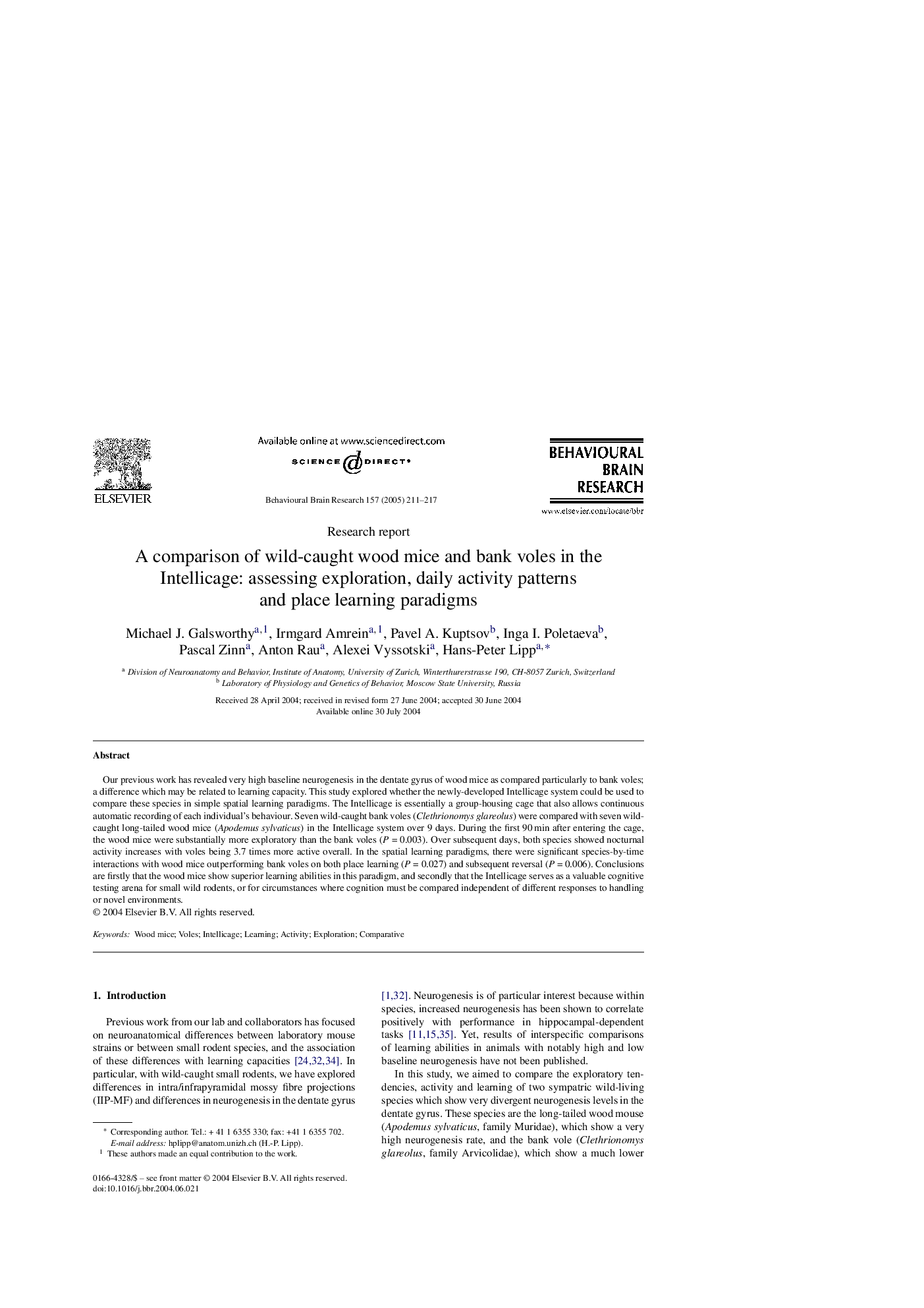| Article ID | Journal | Published Year | Pages | File Type |
|---|---|---|---|---|
| 9406843 | Behavioural Brain Research | 2005 | 7 Pages |
Abstract
Our previous work has revealed very high baseline neurogenesis in the dentate gyrus of wood mice as compared particularly to bank voles; a difference which may be related to learning capacity. This study explored whether the newly-developed Intellicage system could be used to compare these species in simple spatial learning paradigms. The Intellicage is essentially a group-housing cage that also allows continuous automatic recording of each individual's behaviour. Seven wild-caught bank voles (Clethrionomys glareolus) were compared with seven wild-caught long-tailed wood mice (Apodemus sylvaticus) in the Intellicage system over 9 days. During the first 90Â min after entering the cage, the wood mice were substantially more exploratory than the bank voles (P = 0.003). Over subsequent days, both species showed nocturnal activity increases with voles being 3.7 times more active overall. In the spatial learning paradigms, there were significant species-by-time interactions with wood mice outperforming bank voles on both place learning (P = 0.027) and subsequent reversal (P = 0.006). Conclusions are firstly that the wood mice show superior learning abilities in this paradigm, and secondly that the Intellicage serves as a valuable cognitive testing arena for small wild rodents, or for circumstances where cognition must be compared independent of different responses to handling or novel environments.
Related Topics
Life Sciences
Neuroscience
Behavioral Neuroscience
Authors
Michael J. Galsworthy, Irmgard Amrein, Pavel A. Kuptsov, Inga I. Poletaeva, Pascal Zinn, Anton Rau, Alexei Vyssotski, Hans-Peter Lipp,
